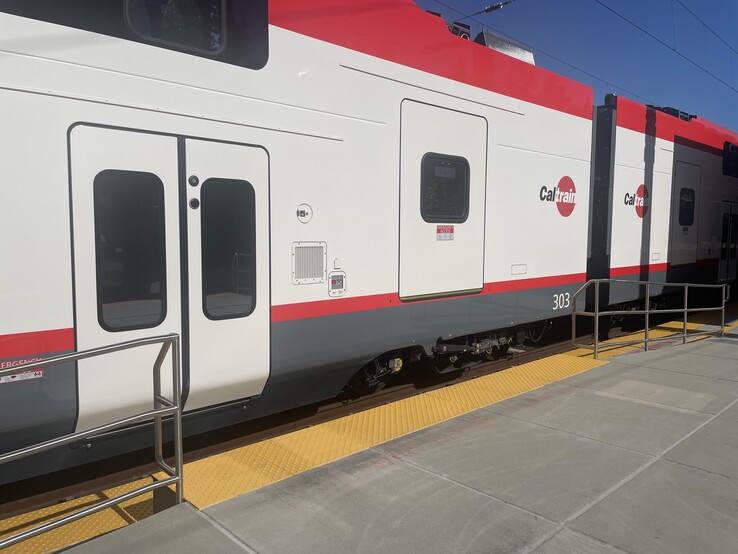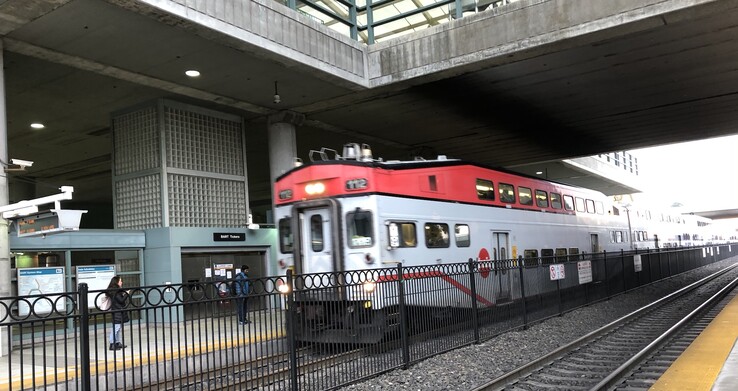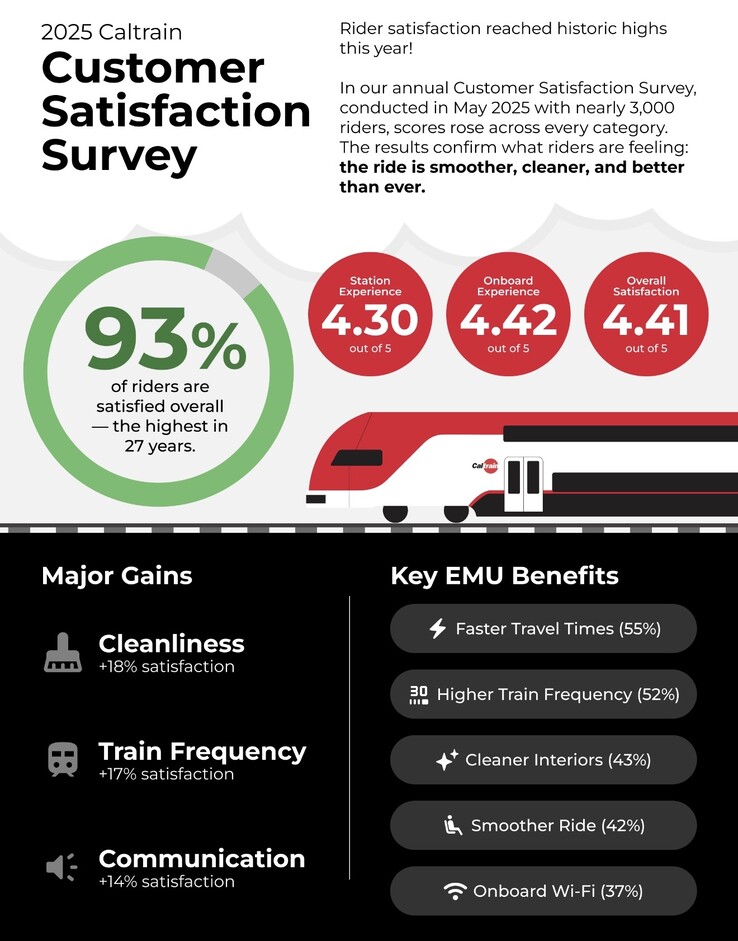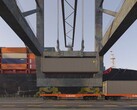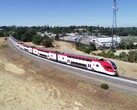Not only in Germany is new infrastructure purchased for a lot of money, only to sit unused later due to budget cuts. While the new Siemens Mireo Plus H hydrogen trains of the Heidekrautbahn near Berlin are facing minor reductions in service, the brand-new electric Caltrain trains built by Stadler that run between San Francisco and San Jose in the heart of Silicon Valley could be hit much harder than that.
Caltrain has now announced how its operations might look starting in November 2026, at least if the necessary funding cannot be secured. The outlook is not good and Caltrain would lose much of its appeal in order to save money. This is happening even though the expensive electrification project is already showing first efficiency gains. Caltrain has been the region’s first “major” electric railroad since April 2024. The trains now run faster, which results in less wear and tear, and are generally easier to operate. Instead of locomotive-hauled diesel trains, which now only operate in the southern section, Caltrain uses so-called Electric Multiple Units (EMUs).
More than twice as many people ride Caltrain on weekends
Ridership has increased by 55% since electrified service kick off. According to Caltrain, the number of passengers on weekends has more than doubled. Riders are also very satisfied with the new trains. Caltrain reports satisfaction rates between 91% (February) and 93% (September), these are the highest levels recorded in the 27 years since surveys began. Revenue has also increased and gives Caltrain a larger budget than originally thought.
However, if public transit funding gets cut, Caltrain might become a system used mainly by those who have no other choice. Car owners who consider switching to the train would likely be discouraged.
Starting in November 2026, service on the important rail line is planned to end as early as 9 pm. That’s already a problem for anyone shopping in San Francisco, since you’ll have to catch the last train home. Visiting friends or enjoying evening activities at restaurants or cultural events would also no longer be practical, as the return trip by bus is extremely time-consuming, as the author of these lines knows from personal experience. The only remaining option would be combining the trip with rideshare services like Uber, but those are very expensive. Anyone with a car will likely avoid the Caltrain for evening activities if there’s no reliable return trip.
The same applies to weekends. Caltrain service is expected to be completely suspended then. None of the more than two dozen stations would be served. Speaking of stations, the plan includes closing about a third of the existing and recently modernized stations.
It’s also important to remember that Caltrain serves as a key connection for sporting events. Whether trains will still operate for events at PayPal Park remains to be seen. The rolling stock and tracks are there, but transporting fans who switch from cars to trains to reduce traffic congestion around the stadium costs money. Fans have become used to having four to five trains per direction within 90 minutes before a game. If that’s cut to two trains per direction at best, it will likely discourage these customers as well.
The plan also calls for one train per hour in each direction at most. It’s therefore expected that Caltrain will rarely run express trains, formerly known as Baby Bullets. Instead, there would only be all-stop services, except for the stations that would be closed.
Caltrain Limited as the new local?
The Caltrain Local would run faster then. However, there’s not much time to be saved. Using today’s Caltrain Limited Express as a reference, which skips six stations, the full trip between San Jose and San Francisco takes about an hour and ten minutes. That saves less than ten minutes of time. The Caltrain Express (formerly Baby Bullet) skips 10 stations and completes the route in about one hour. These small time savings are also a result of electrification. The Stadler Kiss trains accelerate significantly faster than the old trains.
However, saving around ten minutes per trip is enough to cut at least one complete run from the daily schedule. Of course, the closure of certain stations would also reduce the number of potential customers, which would further lower the number of riders per train.
Caltrain emphasizes that no final decisions have been made yet. That said, the budget must be secured by early 2026. Therefore, the plan also puts pressure on politicians and the public to prevent a worst-case scenario. How likely that scenario is will probably become clear in the next few months. For now, it appears to be less about avoiding cuts altogether and more about minimizing their extent.
Long-term costs were not considered
In the US, it’s not unusual to see large amounts of money spent on new infrastructure projects, but ongoing running costs are not part of the planning process. Caltrain shows how the lack of long-term planning can potentially end in disaster and result in a massive waste of taxpayer money. This is one reason why public transit often struggles in the US. Either way, several interesting transit projects have started operating recently. Notable examples include the new rail connection to Honolulu Airport in Hawaii and the new metro-tram system to LAX in Los Angeles. In both cases, regional rail stood up to the powerful taxi lobby.
It’s still unclear what impact the electric Caltrain will have, or may already have had, on the so-called tech shuttles operated by Apple, Facebook, Google and others. In Silicon Valley, there is a privately operated bus network funded by tech companies to transport employees to and from work. Since 2024, the system has been regulated more tightly and the public transit operator Muni now has some control over the bus stops. But according to our research, no statistics are currently available in this regard.
For a detailed overview of Caltrain’s capabilities in Silicon Valley, we recommend reading our in-depth article "Caltrain: Silicon Valley now has a real electric train" from April 2024.





